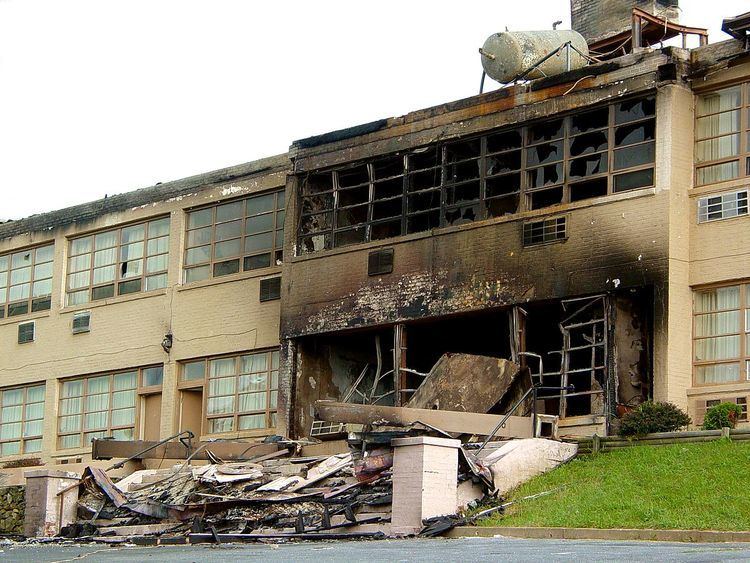 | ||
Arson is the crime of intentionally, deliberately and maliciously setting fire to buildings, wildland areas, abandoned homes, vehicles or other property with the intent to cause damage. It may be distinguished from other causes such as spontaneous combustion, accidental fires (smoking in bed, e.g.), and natural wildfires. Arson often involves fires deliberately set to the property of another or to one's own property in order to collect insurance compensation.
Contents
A person who commits this crime is called an arsonist. More often than not, arsonists use accelerants (such as gasoline or kerosene) to ignite, propel, and directionalize fires.
English common law
Historically, the common law crime of arson had four elements:
- The malicious
- burning
- of the dwelling
- of another
Degrees
In many states, arson is divided into degrees, depending sometimes on the value of the property but more commonly on its use and whether the crime was committed in the day or night.
Many statutes vary the degree of the crime according to the criminal intent of the accused.
United States
In the United States, the common law elements of arson are often varied in different jurisdictions. For example, the element of "dwelling" is no longer required in most states, and arson occurs by the burning of any real property without consent or with unlawful intent. Arson is prosecuted with attention to degree of severity in the alleged offense. First degree arson generally occurs when persons are harmed or killed in the course of the fire, while second degree arson occurs when significant destruction of property occurs. While usually a felony, arson may also be prosecuted as a misdemeanor, "criminal mischief", or "destruction of property."
Burglary also occurs, if the arson involved a "breaking and entering". A person may be sentenced to death if arson occurred as a method of homicide, as was the case in California of Raymond Lee Oyler and in Texas of Cameron Todd Willingham.
In New York, arson is charged in five degrees. Arson in the first degree is a Class A-1 felony and requires the intent to burn the building with a person inside using an explosive incendiary device. It has a maximum sentence of 25 years to life.
In California, a conviction for arson of property that is not your own is a felony punishable by up to three years in state prison. Aggravated arson, which carries the most severe punishment for arson, is punishable by 10 years to life in state prison.
Some states, such as California, prosecute the lesser offense of "reckless burning" when the fire is set recklessly as opposed to wilfully and maliciously. The study of the causes is the subject of fire investigation.
England and Wales, and Hong Kong
In English law, arson was a common law offence dealing with the criminal destruction of buildings by fire. The common law offence was abolished by s.11(1) of the Criminal Damage Act 1971. The 1971 Act makes no general distinction as to the mode of destruction except that s.1(3) requires that if the destruction is by fire then the offence will be charged as arson; s.4 of the Act provides a maximum penalty of life imprisonment for conviction under s.1 whether or not the offence is charged as arson. In Hong Kong, the common law offence was abolished by s 67 of the Crimes Ordinance 1971 (Part VIII of which, as amended by Crimes (Amendment) Ordinance 1972, mirrored the English Criminal Damage Act 1971). Like the English counterparts, 63 of the 1972 Ordinance provides a maximum penalty of life imprisonment, and s 60(3) of the Ordinance requires that if the damage is by fire the offence should be charged as arson.
Scotland
Scotland has no offence known as arson. Events constituting arson in English Law might be dealt with as one or more of a variety of offences such as Wilful Fire-Raising, Culpable and Reckless Conduct, Vandalism or other offences depending on the circumstances of the event. The more serious offences (in particular Wilful Fire-raising and Culpable and Reckless Conduct) can incur a sentence of life imprisonment.
